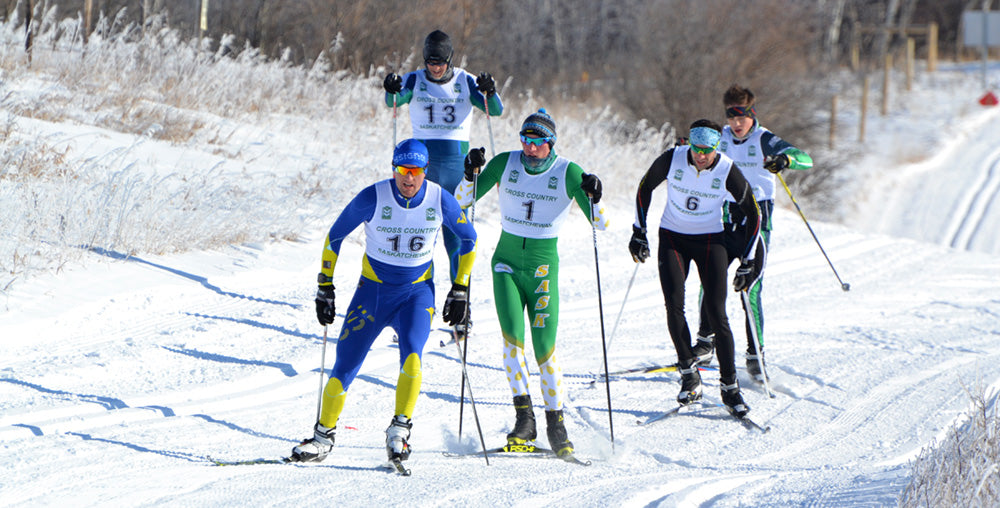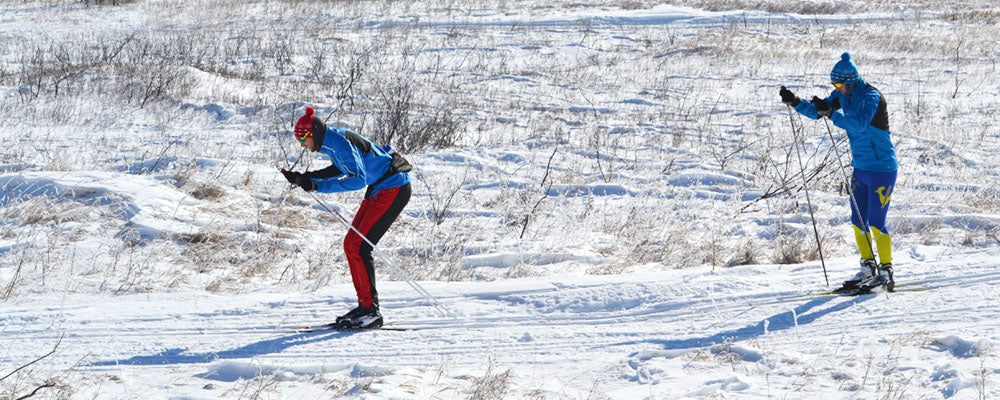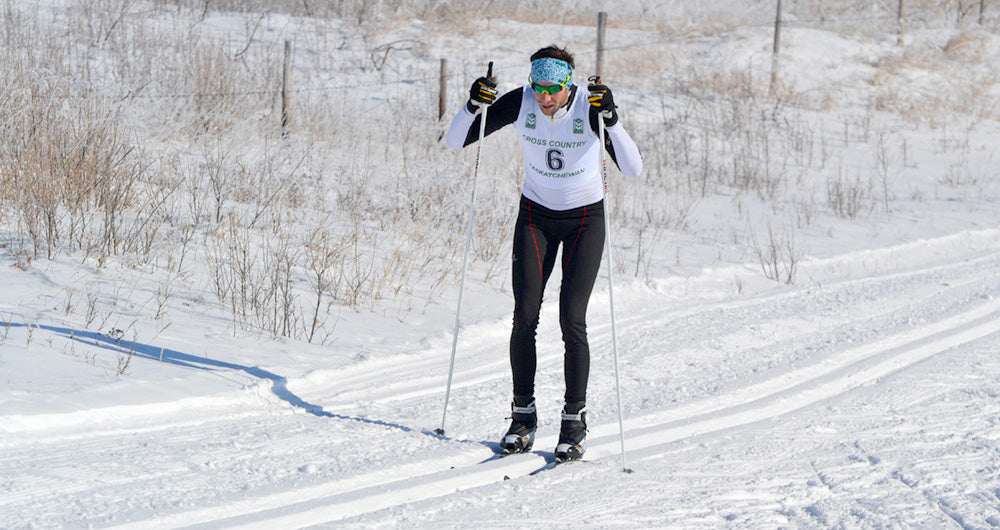Cross country pole sizing
Decades ago cross country ski poles used to be sized under the armpit. Since skate skiing became a thing in the 1980's the effect of pole length on ski technique has gotten a lot more attention.
Correctly sized poles is important because it affects your technique. Sizing depends on the height of the skier, the discipline (skate or classic), the terrain, and the experience of the skier. Personal preference plays a role and there is some wiggle room here; however there are negative effects if you go too short or too long.

Proper ski technique for both skate and classic involves flexion at the ankles, knees and hips so that your weight is slightly forward over the ski. Ideally you want to move your weight over your poles as you ski and get the maximum push out of them.
If your poles are too short you will be missing some range of motion and won't get the maximum push out of them. You'll really notice this double poling at higher speeds.
If your poles are too long the change in the lever effect will restrict your economy of movement. It is more difficult to get your weight over the poles and often results in too upright a stance. We see a lot of skiers - especially skate skiers - with poles that are too long.

Sizing
For a rough guide to pole length, stand in footwear (your ski boots, ideally) on a flat surface. Put the pole tip on the floor. Where the strap comes out of the pole is where the height of the pole is measured.
- classic: pole height should come between the armpit and the top of the shoulder.
- skate: pole height should be around your lower lip.
- off-trail: go about 5cm shorter than your regular classic length.
According to the 2020 International Ski Federation (FIS) rules (which we use both nationally and in Saskatchewan), pole length allowances are as follows:
- classic: must not exceed 83% of skier's height
- skate: must not exceed 100% of skier's height
Again, body height is measured with ski boots on from a flat surface to the top of the uncovered head. Pole length is measured from bottom of pole to the highest attachment of the strap.
For example: if you are 178 cm tall (5'10) with your ski boots on, your maximum classic pole length would be 148 cm (rounding to the nearest cm is legit). Remember, this is the maximum allowed height for classic poles, so you can go shorter. Many racers are most comfortable with pole lengths significantly less than the 83% rule.

Tips
- For flatter terrain, or if you do a lot of double poling, go with slightly longer poles. Use slightly shorter poles for hilly courses.
- If it feels like your poles are too short, try more flexion in the joints and focus on a forward stance. Pay attention to the ankle joint - we see a lot of skiers with minimal flexion here.



Comments
Leave a comment